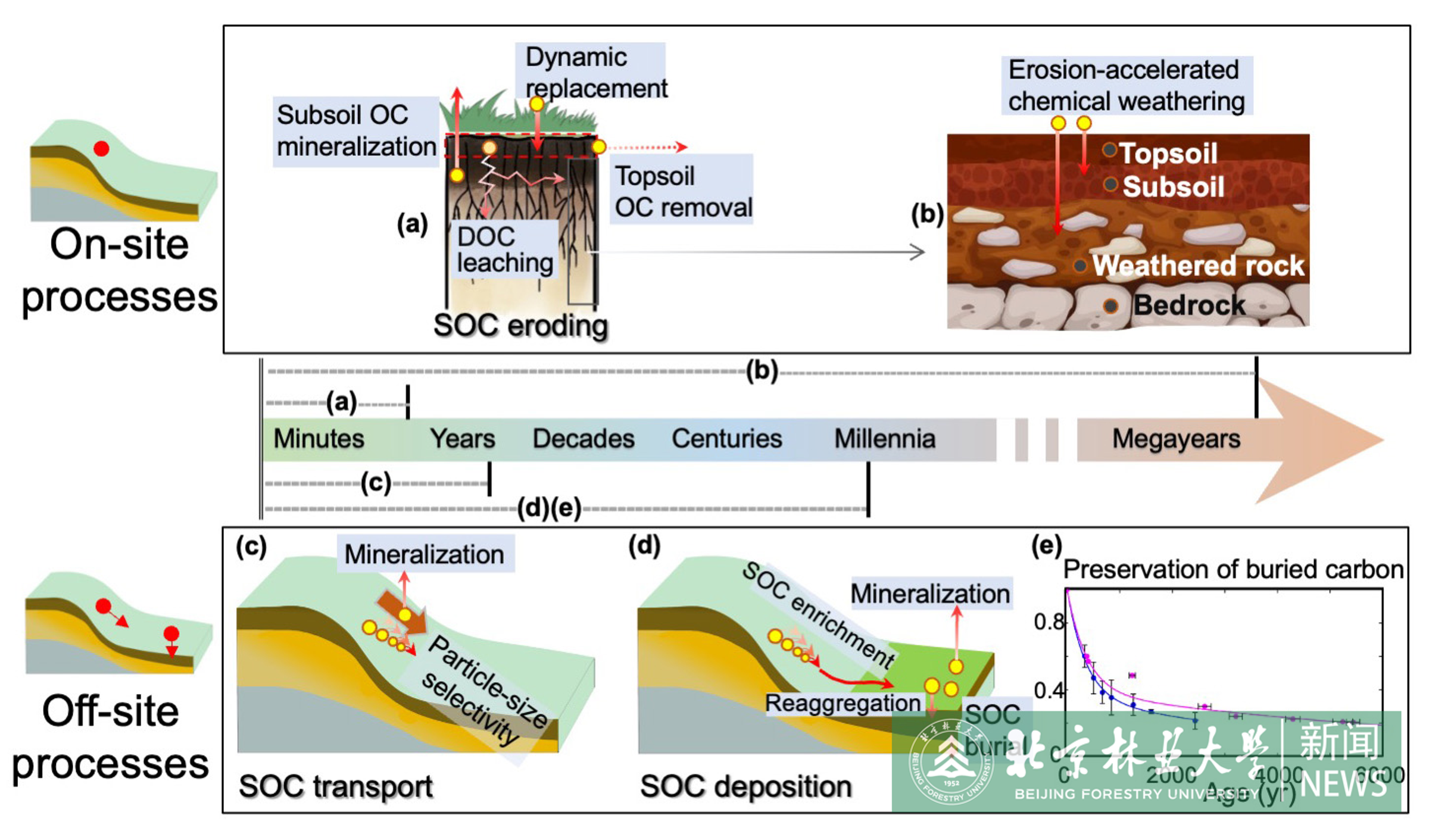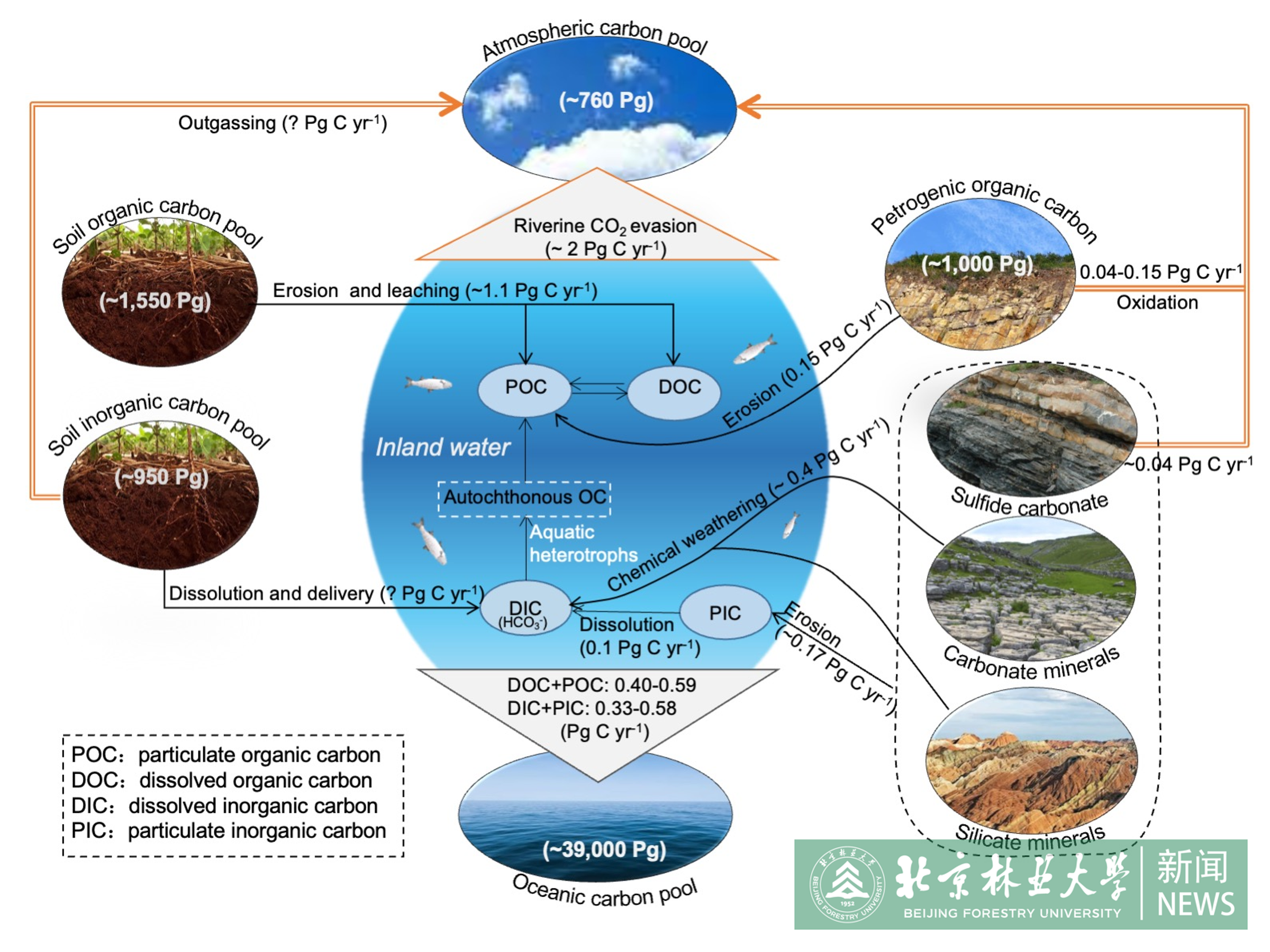Latest news
Dr. Zheng Haiyan, a young faculty member from Beijing Forestry University's School of Soil and Water Conservation, has achieved a significant academic milestone with her review article featured as the cover story in Reviews of Geophysics (Impact Factor: 32.5), the top-ranked journal in geosciences (1st out of 101). Her paper, "The Impacts of Erosion on the Carbon Cycle", represents BFU's first publication in this highly selective journal, which publishes only about 20 papers per year. The groundbreaking work provides new insights into global carbon cycle dynamics, particularly focusing on how soil erosion processes affect carbon sequestration.

Physical and chemical erosion associated with water both affect land–atmosphere carbon exchanges. However, previous studies have often addressed these processes separately or used oversimplified mechanisms, leading to ongoing debates and uncertainties about erosion-induced carbon fluxes. The research team provides an overview of the on-site carbon uptake fluxes induced by physical erosion (0.05–0.29 Pg C yr−1, globally) and chemical erosion (0.26–0.48 Pg C yr−1). Then, they discuss off-site carbon dynamics (during transport, deposition, and burial). Soil organic carbon mineralization during transport is nearly 0.37–1.20 Pg C yr−1 on the globe. The team also summarizes the overall carbon fluxes into estuaries (0.71–1.06 Pg C yr−1) and identify the sources of different types of carbon within them, most of which are associated with land erosion. Current approaches for quantifying physical-erosion-induced vertical carbon fluxes focus on two distinct temporal scales: short-term dynamics (ranging from minutes to decades), emphasizing net vertical carbon flux, and long-term dynamics (spanning millennial to geological timescales), examining the fate of eroded carbon over extended periods. In addition to direct chemical measurement and modeling approaches, estimation using indicators of riverine material is popular for constraining chemical-erosion-driven carbon fluxes. Lastly, the reseachers highlight the key challenges for quantifying related fluxes. To overcome potential biases in future studies, the team strongly recommends integrated research that addresses both physical and chemical erosion over a well-defined timescale. A comprehensive understanding of the mechanisms driving erosion-induced lateral and vertical carbon fluxes is crucial for closing the global carbon budget.



The first author of the paper is Zheng Haiyan, and corresponding author is Prof. Miao Chiyuan from Beijing Normal University. Beijing Forestry University is the signature unit of the first author.
This research was supported by the National Natural Science Foundation of China (No. U24A20572), the National Key Research and Development Program of China (No. 2024YFF0809301) and the National Postdoctoral Researcher Program of China (No. GZC20230249). The work was also supported by Agritech National Research Center and received funding from the European Union's NextGenerationEU initiative (Piano Nazionale di Ripresa e Resilienza [PNRR]—Missione 4 Componente 2, Investimento 1.4—D.D. 1032 17/06/2022, CN00000022).
Paper link: https://agupubs.onlinelibrary.wiley.com/doi/full/10.1029/2023RG000829
Written by Zheng Haiyan
Translated and edited by Song He
Reviewed by Yu Yangyang










